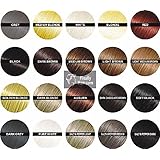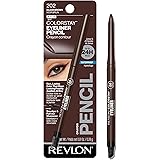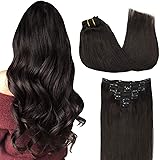As seen in the video above, recognizing subtleties often makes a big impact. When it comes to effective skincare, the ability to spot the difference between products and ingredients is crucial. Many common skincare decisions are impacted by these nuances. A clear understanding helps consumers make informed choices. This guide will help you understand key distinctions.
Why Skincare Differences Are Important
Product efficacy is significantly affected by slight variations. Ingredients are chosen for specific skin concerns. Misunderstanding these choices can lead to poor results. Imagine if a hydrating serum was mistakenly used for exfoliation. Skin health would not improve effectively. Therefore, discerning differences is an essential skill.
Cost efficiency is also a major consideration. Expensive products are often purchased without full understanding. Similar, more affordable options might be overlooked. Money can be saved when informed decisions are made. A wise investment in your skin is always desired.
The Impact of Subtle Formulations
Even small ingredient shifts matter greatly. A product’s overall effect can be altered. Consider two moisturizers with similar names. One might contain humectants; the other occlusives. Their primary functions are quite different. This distinction directly impacts hydration levels. Knowing these details guides your routine.
Skin types also react uniquely. What works for oily skin may harm dry skin. Products are formulated for specific needs. Understanding your skin is the first step. Then, products are selected based on their specific benefits. This personalized approach yields better outcomes.
Spotting the Difference: Common Skincare Confusions
Many skincare items appear similar at first glance. However, their active components often vary. These variations lead to different results. Learning to differentiate is a valuable skill. It prevents common product misuse.
AHA vs. BHA Exfoliants
Alpha Hydroxy Acids (AHAs) and Beta Hydroxy Acids (BHAs) are popular exfoliants. Their main difference lies in solubility. AHAs are water-soluble; they work on the skin’s surface. They are ideal for addressing sun damage or texture issues. Conversely, BHAs are oil-soluble. These penetrate deeper into pores. Blackheads and acne are targeted more effectively.
Glycolic acid is a common AHA. Salicylic acid is a well-known BHA. Each offers unique benefits. Skin sensitivity is also a factor. AHAs might be irritating for some. BHAs can be too drying for others. Proper selection hinges on these distinctions.
Retinol vs. Bakuchiol
Retinol is a well-established anti-aging ingredient. It is a vitamin A derivative. Cell turnover is promoted by its action. Fine lines and wrinkles are reduced effectively. However, retinol can cause irritation. Sun sensitivity is also increased.
In contrast, bakuchiol is a plant-derived alternative. It offers similar anti-aging benefits. Skin irritation is typically much lower. It is often recommended for sensitive skin types. Bakuchiol can be used during pregnancy. This offers a gentler option for many. The choice depends on individual tolerance.
Serums vs. Essences
Serums are concentrated treatments. They target specific concerns like hyperpigmentation. Potent active ingredients are common in serums. These are applied after cleansing and toning. Their job is to deliver a targeted boost.
Essences, conversely, are lighter in texture. They are designed for hydration and preparation. Skin is prepped for subsequent steps. Essences often contain ferment filtrates. These aid in absorption of other products. An essence enhances a routine, while a serum treats. Understanding their roles is key.
Decoding Skincare Ingredient Lists
Ingredient lists can be intimidating for many. However, they hold vital information. Components are listed by concentration. The highest concentration is first. This fact is very important for understanding. Active ingredients are often highlighted.
Identifying Key Actives
Look for ingredients that address your concerns. Hyaluronic acid offers deep hydration. Niacinamide improves skin barrier function. Vitamin C provides antioxidant protection. Knowledge of these actives is empowering. You can then tailor your selections.
Imagine if two products promise “hydration.” One might use glycerin. The other could feature ceramides. Glycerin is a humectant, drawing water in. Ceramides are lipids, reinforcing the barrier. Both hydrate, but through different mechanisms. This is a critical skincare difference to understand.
Recognizing Potential Irritants
Certain ingredients can cause issues. Fragrances are common culprits. Alcohol, especially drying types, can dehydrate skin. Sulfates may strip natural oils. If your skin is sensitive, avoid these. Checking ingredient lists helps prevent reactions. Your skin’s comfort is paramount.
Parabens and phthalates are often discussed. Some prefer to avoid these compounds. Research into their effects is ongoing. Personal preference should guide these decisions. Many brands now offer “free-from” options. Informed choices are always beneficial.
Texture and Formulation Impact Skincare Choices
How a product feels matters. Texture affects absorption. It also influences user experience. A rich cream suits dry skin well. A light gel is perfect for oily skin. These preferences are quite personal.
Gels, Creams, and Lotions
Gels are typically water-based. They absorb quickly without residue. Oily and combination skin types benefit most. They feel refreshing and light. Their non-comedogenic nature is a bonus.
Lotions are a mix of water and oil. They offer more moisture than gels. Normal to slightly dry skin finds them suitable. They spread easily and feel comfortable. A good middle-ground option is provided.
Creams are oil-rich formulations. They provide intensive hydration. Very dry or mature skin often requires them. A protective barrier is formed on the skin. This reduces moisture loss effectively. The choice depends on hydration needs.
Application and Absorption Differences
A thick cream may require more effort to spread. It might feel heavy initially. Conversely, a watery serum disappears quickly. Layering multiple products needs consideration. Heavier textures typically follow lighter ones. This order ensures proper absorption. The routine’s effectiveness is improved.
Imagine if a heavy oil was applied before a light serum. The oil would likely block absorption. This would render the serum less effective. Therefore, the order of application matters significantly. Understanding product textures is thus vital for optimal results.
Personalizing Your Skincare Choices
No single product works for everyone. Skincare is a very personal journey. Your skin’s needs evolve over time. Factors like age, environment, and diet impact it. Regular assessment of your skin is important.
Patch Testing and Observation
New products should always be patch tested. Apply a small amount to a discreet area. Observe for reactions over 24-48 hours. This prevents widespread irritation. Your skin’s unique response is key.
Pay close attention to how your skin feels. Does it feel tight after cleansing? Is it oily midday? These observations provide clues. They help refine your routine. Skincare is about constant adjustment.
When to Seek Professional Advice
Sometimes, professional guidance is needed. Dermatologists offer expert insights. They can diagnose complex conditions. Personalized treatment plans are provided. Do not hesitate to consult them. Optimal skin health is worth pursuing.
Understanding these crucial skincare differences empowers you. It ensures that every product serves a purpose. Your investment in skincare becomes more effective. The goal is always healthy, radiant skin. So, keep honing your ability to spot the difference skincare makes.











